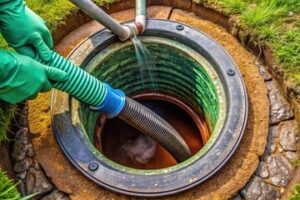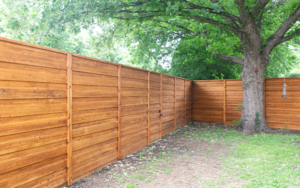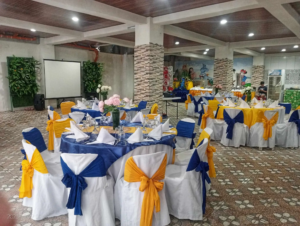Septic Tank Armadale stores and collects all wastewater from a house. When sewage enters the tank, solids fall to the bottom where they decompose as sludge and liquid flows to the top as effluent.

A well-functioning septic system requires regular septic tank pumping and careful monitoring of what can and cannot be flushed. Items such as dental floss and wipes that are labeled as ‘flushable’ can clog pipes and cause leaks.
The septic tank size is determined by the number of bedrooms in the house and should retain at least two days’ worth of sewage flow. This allows time for solids to properly separate from liquid waste and allow bacterial digestion. Properly sized tanks are rectangular, oval or round in shape and have baffles that force sewage down into the tank.
The tank has three layers: solid waste that settles to the bottom; (sludge); floating grease, fat and other suspended solid material that rises to the top; and a partially clarified liquid zone; (effluent). A tank’s surface area is calculated to allow a certain amount of clear space between the sludge and scum layers, with enough room for bacterial digestion of the sludge. The tank must also have a sufficient volume to handle the household’s normal waste load.
When the septic system is working well, the sludge layer should be only about 6 inches thick and the scum layer no more than about 12 inches thick. Tank cleaning is recommended before these layers reach their maximum thicknesses. When these limits are reached, the leach field can be clogged with solids and sludge. This clogging can shorten the drainfield’s life, so authorities set guidelines for tank cleanout based on the amount of sludge and scum that will be present in the tank after two to three days of sewage retention.
Some manufacturers offer basket-like septic tank filters, which are designed to prevent solids and debris from passing through the drainfield. These may be more effective than baffles and screens, but they must be removed and hosed down periodically to keep them working properly. Other filter technologies use septic tank effluent to kill bacteria, but they are still less effective than the sludge and scum reduction provided by good tank design and regular cleaning.
Sludge and Scum Layers
As wastewater passes through the septic tank, solids start to separate. Heavy materials like feces and toilet paper sink to the bottom of the tank to form sludge, while lighter substances float to the top and form the scum layer.
As the septic tank sits, the anaerobic bacteria in the sludge layer consumes the organic matter and changes it to a liquid effluent that flows out into the absorption field. Over time, the sludge and scum layers can build up and reduce the effective volume of the tank, which can lead to reduced retention times.
While a septic system will handle most waste, homeowners should not flush anything that can’t decompose in the tank, including diapers, disposable wipes, feminine hygiene products, paint rinses from home improvement projects, and pet poop. These items can clog the septic tank, septic lines and the absorption field.
In addition to water conservation practices, septic tank pumping and regular maintenance can help extend the life of your septic system. A professional septic tank inspection can give you a good idea of the condition of your septic tank and how much sludge remains in it.
Professional septic tank inspectors use devices called “sludge judges” to accurately measure the sludge and scum levels in your septic system. These tools allow the inspector to see how much sludge is building up and determine whether your system is in need of repair or needs to be pumped out.
Fortunately, Battle Ground residents can also monitor their septic systems between professional visits with DIY methods. The most common way is to use a stick to mark the distance from the outlet baffle or tee in the tank to the top of the scum layer. If the two marks are three inches or less apart, your septic tank needs to be pumped.
Depending on your household size and septic system usage, you should have a professional inspect your septic tank every 3-5 years to ensure it is functioning properly. If you skip septic tank pumping, the sludge layer may build up too much and restrict the inlet and outlet pipes, resulting in clogs and system failure.
Gases and Odors
With each toilet flush, shower, load of laundry or sink drain, sewage and wastewater leave your home into your septic tank. Once in the tank, solid waste sinks to the bottom of the septic tank and begins to break down. The liquid waste rises to the top of the tank where it is separated from the sludge. The partially treated wastewater is then drained into the disposal field.
Regular septic system maintenance keeps your septic tank and disposal field working properly. This means scheduling routine pumping, checking the septic tank vent and inspection of your drain field every 3 to 5 years.
Septic tank odors can be caused by many things. These include:
Clogged Drains: Sewage pipes direct sewage to your septic tank and other components of the system. If these become clogged it can prevent all waste from reaching its destination and can create an unpleasant septic smell in your home.
Incorrectly sized tanks: The septic tank should be the correct size to match your house and septic system design. A poorly sized tank will lead to a faster filling, requiring it to be pumped more often.
Unnecessary Pumping: Not having your septic tank pumped regularly (about every three to five years) is one of the fastest ways to damage your system. Not only will this cause the septic tank to overflow, it can also result in the sewage seeping into your home and yard.
Using a non-septic approved toilet paper or kitty litter: This can cause the solids to break down too quickly, resulting in a clogged septic tank. Non-biodegradable solids like kitty litter and plastic do not dissolve in water, so they can build up in your septic tank.
Improperly positioned landscaping around the septic tank and disposal field: Landscapers should not put permanent structures over or plant trees close to the septic tank or drain field. Plants and trees can block the flow of sewage or cause a leak in the line between the septic tank and the disposal field.
Septic odors can also be caused by cracked or damaged septic tank or plumbing lines that are not repaired promptly. To reduce the risk of septic odor problems, avoid DIY septic system maintenance tasks, especially those that require professional assistance to complete safely and correctly.
Pumping
A septic tank is an underground watertight container that receives all the wastewater from your home. It provides primary treatment by separating the solid wastes from the liquid wastewater called effluent. This prevents the sludge from leaving the septic tank and travelling to your soil absorption field where it could clog and cause system failure.
The septic tank is an important part of your wastewater management system and must be kept in good working condition. One way to do this is by having it pumped out regularly by a professional licensed septic tank cleaning contractor like Crews Environmental. A licensed septic tank cleaner will remove the sludge and scum layers from the septic tank and then drain it into a septic truck for disposal in a safe and environmentally responsible manner.
Septic tanks work by using a series of pipes that extend from the inlet and outlet tees into the septic tank. As wastewater enters the septic tank it flows through these pipes and creates hydraulic pressure. This pressure forces the sludge layer to move down and the scum layer up into the septic tank water. The septic tank then uses bacteria to further break down the scum and sludge.
When the septic tank reaches its full capacity it is time to pump it out. This is usually done by a septic tank truck that has a large tank on the back of it and a 3’ diameter hose that goes from the tank to your house. The powerful vacuum pump at the septic tank truck can suck the entire contents of your septic tank into the truck’s tank. The septic tank cleanout process includes flushing and back-flushing the tank to break up scum and sludge layers so that they can be pumped out more thoroughly.
A septic tank is a great option for treating wastewater in rural areas where the cost of connecting to the municipal sewer system would be prohibitive. However, septic systems are only effective if they are properly installed and maintained. Having your septic tank pumped out regularly by a professional is the best way to keep your septic system in good working order. Avoiding flushing items that are not meant to be in your septic system, such as non-biodegradable plastics and wipes that claim to be ‘flushable’ is also very helpful.







